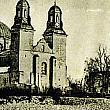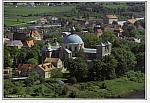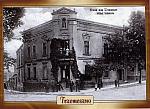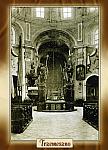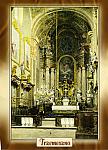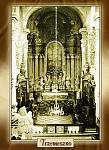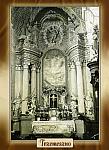What is a Basilica?
by Edward Adam Skendzell
Originally the term referred to a style of building. Early Christians, when they could worship in the open, did not wish to have churches that resembled pagan temples. Instead they adapted the large Roman building which was a Hall of Justice. This building was called by the Greek word “basilica,” which means “the house of a king.”
The ancient Roman floor plan of the basilica usually had three or five naves that were separated by columns. At the far end there was a raised platform for the judge’s bench. Many columns and arches were standard features of the classical basilica. Early Christians made some adaptations to this form: they added a transept so that the floor-plan took on the form of a cross; the altar was set before the rounded wall, called the apse, in the area where the Roman judge would have sat; and at the front of the structure they often built twin towers. All these elements were the beginning of a style of architecture that became known as Romanesque.
The Basilica of St. Adalbert follows quite closely the description above. The only aspects of St. Adalbert’s that differ from the Roman structure are its dome and its groined ceiling with the intersecting vaults. The ceiling of the classical Roman basilica, or Hall of Justice, was very much like the coffered ceiling of the nave of Sacred Heart Church in Grand Rapids which was designed by architect Erhard Brielmaier of Milwaukee.
The architectural style of a church is not the only reason for its designation as a basilica. Although the Basilica of St. Adalbert does contain all the elements of the best Romanesque basilicas: cross-shaped floor plan, rounded apse, columns and arches, three naves, twin towers, and baldachino over the altar, today, the designation of basilica is bestowed by the Pope of the Roman Catholic Church. He may do this for a variety of reasons:
- The church is a historical center of the growth of the Catholic faith.
- The church is outstanding for its architectural design and embellishments which render it a fine specimen of art.
- The church is a center of pilgrimage of special ministry, as to a definite ethnic group.
Excerpted from The Basilica of St. Adalbert by Eduard Adam Skendzell, 1980

 facebook
facebook
